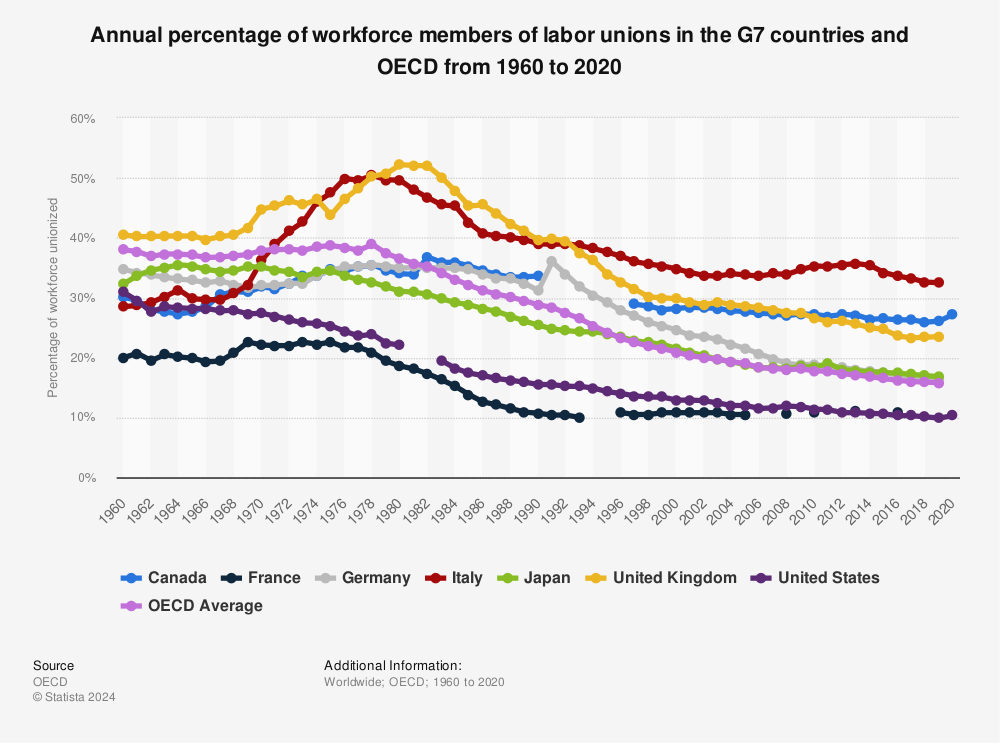10.7 The Future of Unions
The labour movement is currently experiencing several challenges, including a decrease in union membership, globalization, and employers’ focus on maintaining nonunion status. As mentioned in the opening of this section, there has been a steady decline in Canada of union membership since the 1950’s. This decline is even more steep for the US. Claude Fischer, a researcher from University of California Berkeley, believes the shift is cultural. His research says the decline is a result of North American workers preferring individualism as opposed to collectivism (Fischer, 2010). Other research says the decline of unions is a result of globalization, and the fact that many jobs that used to be unionized in the manufacturing arena have now moved overseas. Other reasoning points to management, and that its unwillingness to work with unions has caused the decline in membership. Others suggest that unions are on the decline because of themselves. Past corruption, negative publicity, and hard-line tactics have made joining a union less favourable.

To fully understand unions, it is important to recognize the global aspect of unions. Statistics on a worldwide scale show unions in all countries declining but still healthy in some countries. “Most European countries still have far greater levels of union coverage than the US. As of 2013, more than two-thirds of workers in Denmark, Sweden, and Finland were union members. In France and Austria, a minority of workers are in unions, but 98 percent are covered by collective bargaining contracts” (Matthews, 2017, para. 5).
Globalization is also a challenge in labour organizations today. As more and more goods and services are produced overseas, unions lose not only membership but union values in the stronghold of worker culture. As globalization has increased, unions have continued to demand more governmental control but have been only somewhat successful in these attempts. For example, free trade agreements such as the new Canada-United States-Mexico Agreement (CUSMA) have made it easier and more lucrative for companies to manufacture goods overseas. Globalization creates options for companies to produce goods wherever they think is best to produce them. As a result, unions are fighting the globalization trend to try and keep jobs in Canada.
There are a number of reasons why companies do not want unions in their organizations. One of the main reasons, however, is increased cost and less management control. As a result, companies are on a quest to maintain a union-free work environment. In doing so, they try to provide higher wages and benefits so workers do not feel compelled to join a union. Companies that want to stay union free constantly monitor their retention strategies and policies.
“10.7 The Future of Unions” from Human Resources Management – 3rd Edition by Debra Patterson is licensed under a Creative Commons Attribution-NonCommercial-ShareAlike 4.0 International License, except where otherwise noted.

